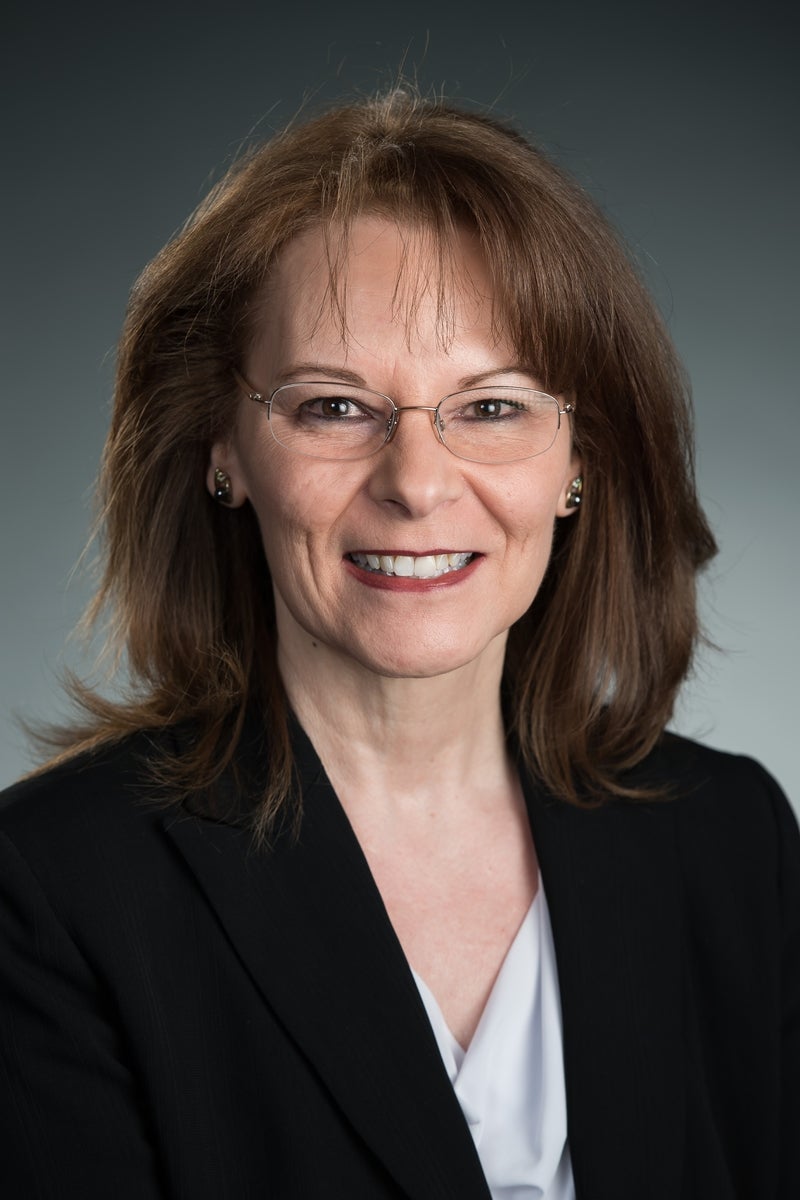As women demand more equity in the workplace, there’s no doubt they are underrepresented among the big technology companies. While 46 percent of the overall workforce is made up of women, they make up less than 25 percent of employeesThese statistics are from the U.S. Bureau of Labor Statistics and Statistica. in technology jobs at Apple, Google, Microsoft and Twitter. Uber has 15 percent of its tech jobs held by women.
Kathleen Moser has spent her entire career as a woman in technology, and now she’s working to ease a pathway to young women who want to be in the field.
“We’re trying to increase enrollment for women in technology, but it’s not moving very fast,” said Moser, a clinical assistant professor in the W. P. Carey School of Business at Arizona State University. She teaches online and on-campus classes in database technology and project management.
Kathleen Moser
“There are a lot of strides that have been made in an attempt to make it attractive for women, and one of the biggest things is to not focus on high school students because that’s too late,” she said. “So middle school and younger is the target to introduce technology to girls and get them interested at younger ages, when they have a lot of creativity.”
Moser is adviser to the Women in STEM Club at ASU, called WiSTEM, and she also participates in the Secret Code of Business, a workshop for middle schoolers that promotes STEM education and offers some girls-only sessions.
“It’s exciting for us to be around their energy,” Moser said of the young campers. “If you can plant a seed that takes off, that’s the good part.”
Moser answered some questions from ASU Now.
Question: How did you get into the technology field?
Answer: Way back in the day, I was working in a department store after high school, and retail had the old cash registers. We were switching to new computer terminals, and, especially when there was a large sale in the store, the terminals would never calculate the sales price correctly.
So one day I decided, I’m going back to school to learn how to program these so they will work properly. That was my "in" to this field.
When this technology issue came up, that’s what prompted me to move forward and find my passion.
Q: What was majoring in computer information systems like in the 1980s?
A: Always, I was one of the few women in the program.
I excelled at programming. My nerd side came out. I would program between midnight and 6 a.m., when I didn’t have any distractions.
I loved the challenge of it and that feeling of when you finally get it to work.
When I took a course in databases, that’s what really captured my passion. I liked programming, but this was building something from scratch and trying to get it to work. It’s something that every company requires, a database.
I didn’t realize it back then, but I was choosing a career that was very sustainable. Your career will take you in all kinds of directions, but there was never a time I was out of a job for very long.
Q: Did you have obstacles in your career?
A: Every woman has a story about working in a technology field where there are very few women. It’s the typical things: “Do you really know what you’re talking about?” “Show us first.”
It’s very much that our male counterparts are promoted because of their potential, but we have to prove ourselves first before we are promoted.
Talking to women graduates of our program today, they still have things they have to deal with because companies are slower to react to the environment.
Women in technology is a very sought-after thing right now. Companies want more women in their ranks. But companies have to be ready, or (the women) will have to deal with the same things they’ve always had to deal with.
It can be anything from pay raises to issues with child care and maternity leave. Now companies are moving toward accommodating not only women but men as well with maternity leave. It’s slowly happening.
Q: Is it still that way?
A: As a professor in the information systems program, I’m going to upgrade my education. I was going to meetups once a month at a company that sponsored them to learn about the newest topic and how it was applied.
The first time I walked into the meeting, you try not to notice but you can’t help it, I was the only woman with 30 men. Another woman came in at the halfway point.
For the rest of the meetings, it was me and one or two other women with 30 to 60 men. It’s a fact of life.
I was going there to learn something new. So you just jump in.
Q: What do you tell young women about pursuing a career in technology?
A: For whatever reasons, women don’t get involved as much as men do in seeking out opportunity. And so what I like to tell women right now is: learn how to negotiate. Learn how to work with anybody. Put yourself first.
Don’t be afraid to speak up. Maybe you’re in a team with three male counterparts and everybody is in a meeting and they’re all vying for “take my idea.” Make sure you speak up and that everybody hears what you have to say.
Q: And what about younger girls?
A: We ask, “What can we provide to help you move on this pathway?” If it’s difficult or they’re having trouble and gets to be frustrating, they’ll go on a different path.
Usually they’ll say, “My friends don’t want to do this.”
That’s the point we lose young, creative women — the peer pressure. It’s a big force.
That’s why I tell them, “If you have a passion for it, don’t let anybody tell you not to pursue it. Just go for it.”
The passion is the most important part because that’s what sustains you over the hills and valleys over the years.
Learn more about the many technology and science camps at ASU this summer, the Secret Code of Business, and the First Lego League robotics camp for girls.
Top photo courtesy of Pixabay.com
More Science and technology

New NIH-funded program will train ASU students for the future of AI-powered medicine
The medical sector is increasingly exploring the use of artificial intelligence, or AI, to make health care more affordable and to improve patient outcomes, but new programs are needed to train…

Cosmic clues: Metal-poor regions unveil potential method for galaxy growth
For decades, astronomers have analyzed data from space and ground telescopes to learn more about galaxies in the universe. Understanding how galaxies behave in metal-poor regions could play a crucial…

Indigenous geneticists build unprecedented research community at ASU
When Krystal Tsosie (Diné) was an undergraduate at Arizona State University, there were no Indigenous faculty she could look to in any science department. In 2022, after getting her PhD in genomics…

